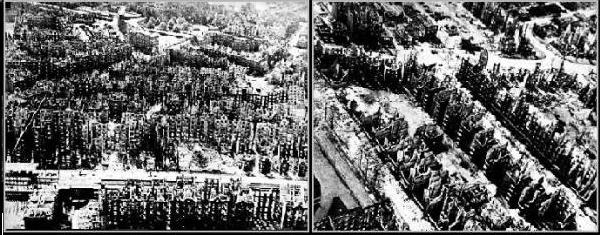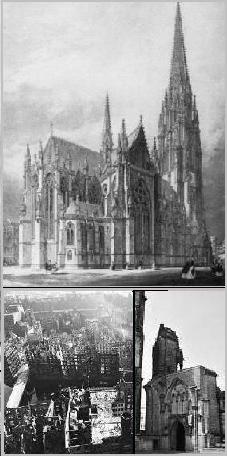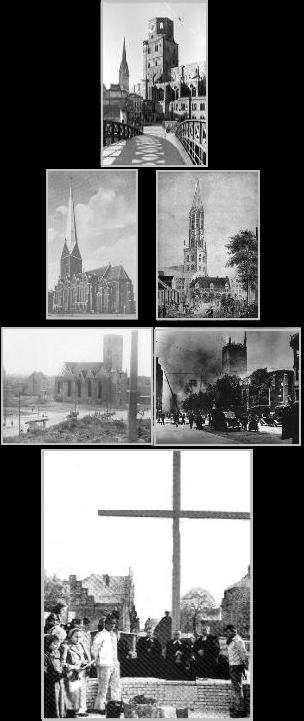

It was a joint effort, the RAF, Canadians and the USA combined to create an “around the clock” bombing mission spanning 8 days and 4 nights. On the night of July 27, 1943, starting shortly before midnight, Hamburg was by attacked hundreds of aircraft in a massive, intentional effort to incinerate the city and its civilian inhabitants. On that July night, as part of “Operation Gomorrah,” utter hell devoured the city. With this event, the world media, starting in London, somehow managed to turn the mass murder of German civilian populations, especially those of the working class, into an “acceptable” and “legitimate” method of war. The term “Hamburgerization” was used by the RAF to jokingly refer to future bombing missions.
On that hellish July night, Hamburg was engulfed in a chasm of flames five times the height of the Empire State Building with winds exceeding 150 miles per hour. Everything and everyone in its path was sucked up and swallowed alive. It fried people to the burning pavement and roasted people in shelters as they hopelessly struggled for breath. “Operation Gomorrah,” the hideously ten day long firebombing of Hamburg by the British, left 60 percent of the city destroyed under the rain of 9,000 tons of bombs. It murdered 40,000 to 50,000 people in as an agonizing manner as could be devised and left a million people suddenly homeless. The university library with its 800,000 volumes was gone, the ancient city was wholly obliterated, yet Hamburg would be hit 69 times by war’s end.
A Swiss eye-witness of the Hamburg raids, writing in the National-Zeitung, reported: “Whole streets, squares, and even districts had been razed. Everywhere were charred corpses, and injured people had been left unattended..Charred adult corpses had shrunk to the size of children. Women were wandering about half-crazy. That night, the largest workers’ district of the city was wiped out.”
Neutral nations reporting bombing fatalities estimated much higher figures at the time than we hear today. Swedish reporters described the phosphorus bombs: “They talked of the strange sensation of seeing gardens on fire in a city ravaged by flames. Hundreds of people were found burned to death in the streets and the clothing was scorched off many by the fires. About 47,000 dead bodies were counted before search work began, and estimates of people killed vary from 65,000 to 200,000. In Hamburg, 18,000 people alone were reported to have been drowned there when the Elbe Tunnel received a direct hit.”
| St. Nikolai in Hamburg was the tallest building in the world from 1847-1876 and was once the workplace of Karl Philpp Emanuel Bach. It was destroyed by bombing in Operation Gomorrha along with the other four Hamburg churches he directed, pictured below. |

|

|
| Left: St. Nikolai, Katharinen Kirche Ruins. Right near top, left: Peterskirche; right: Jakobikirche. Right, bottom: Gathering at the site |
|
Now he has arisen: he, who slept so long,
from the depth arisen, out of arches strong. Huge he stands and unknown in the twilight land, and the moon he crushes in his blackened hand. Broad on city’s evening, broad and angrily shadow falls, and frost of strange obscurity makes the market’s bustle stop in icy scare. Silence reigns. They turn – and no one is aware.
He stands over ramparts blue of flames around,
And he thrusts his kiln-staff, dark and charcoal-bound
|